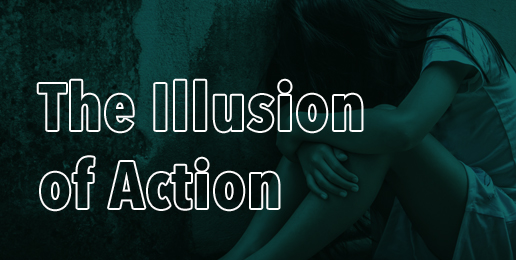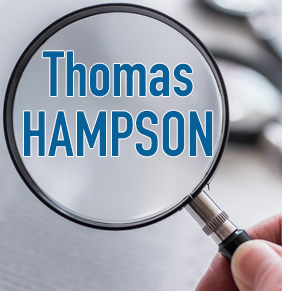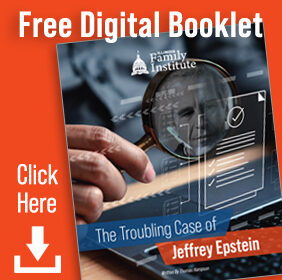
How we spend our time and money reveals what we care about. That principle applies not only to individuals, but to groups, to corporations, to governments.
What people say means very little. It’s what they do that counts.
Therein lies the problem. Collectively, we have no idea what anybody or any agency does. We depend on what we read in the media, including social media, and what we hear word of mouth. All these sources have proven to be unreliable.
Even when we see things with our own eyes, we can’t be sure what we’ve seen. Take the case of George Floyd. For months, we were told and could see that Officer Derek Chauvin’s knee was on George Floyd’s neck. It looked like that in all the videos. That’s what all the witnesses said who were interviewed on TV and radio and podcasts.
But that was not true.
If you don’t believe me, watch the documentary “The Fall of Minneapolis.” Body camera footage, not seen before, clearly shows Officer Chauvin’s knee was not on Floyd’s neck. There also is much more in the movie that we thought we knew but just was not so. The movie additionally documents that at least two witnesses from the Minneapolis Police Department lied on the stand. One of them was the Chief of Police.
It isn’t so easy to tell what people are doing even when you are looking at them with your own eyes.
So how do we know if our elected representatives are actually doing what we elected them to do?
For one thing, we have to pay attention. And we are not.
Let’s take the problem of the commercial sexual exploitation of children. Everyone says they care about the issue, that they want the problem eliminated. I haven’t heard anyone say publicly that they want it to continue. Yet a few months ago, there was much outcry over tens of thousands of missing children, undocumented, unaccompanied minors that the Department of Homeland Security “lost.” As many as 85,000 of them. Missing. Some claimed the missing were being sex trafficked.
Articles were written, hearings were held. Nothing was resolved.
We know that over 200,000 unaccompanied minors entered the U.S. so far during the Biden administration. We don’t know how many of them are really missing.
So we certainly can’t claim the missing have been sex trafficked or labor trafficked.
There are still no answers. And we have no idea if anyone is still trying to come up with answers. How hard would it be to take even a sampling of the list, try to track down, say, two percent of them, then report back on how many could not be located?
Is that even being done? We don’t know.
The reason we don’t have these answers many months after the concern was raised is the result of either incompetence or indifference. Or both. This applies not just to those in DHS, but the Congressmen who have not followed through, to news media who failed to stick with the story, and to us who have failed to hold all of them accountable. After a flurry of interest, everyone just moves on. Nothing has been solved. Nothing has changed.
What we remember is the initial claim that 85,000 unaccompanied children are missing and are suspected to have been sex trafficked. That’s not a lie. It could be true, but there is no evidence that it is. In fact, there is no evidence that 85,000 are missing. Nevertheless, that number, 85,000, continues to be used by various interest groups to promote their agendas. Because they “care” about children.
Wouldn’t caring involve finding the truth? Tracking down the missing?
What really is being done to combat this problem?
An international study conducted in 2016 found that there were 1800 private organizations involved in combatting human trafficking worldwide. Seventy percent of these are focused on sex trafficking. Only 7 percent of all anti-trafficking efforts are engaged in rescuing victims. Most are involved in public awareness, counseling, shelters, legal services, vocational training, or law enforcement education.
Very few were involved in prevention.
Another study that was done a few years earlier looked at the amount of money that has been spent by governments and private organizations over the previous ten years. The study found tens of billions had been spent worldwide to reduce record-high human trafficking. Trafficking is at higher levels than during the height of the slave trade in the 1800s. The U.S. alone spent more than 10 billion dollars during the study period. Yet during that time, there had been no measurable, or even noticeable, reduction in trafficking activities.
No reduction. No impact.
In fact, the problem appears to be increasing. Why do you suppose this is?
Could it be for the same reason that we don’t know if or how many unaccompanied minors are missing? I think that would be a good guess. It’s also because there is much less attention focused on the problem than individuals, nonprofit organizations, and government agencies want to admit.
There also is no system in place to attack the problem. Efforts to stop human trafficking are piecemeal at the local, state, federal, and international levels. Sure, there are a variety of federal, state, and local agency task forces focused on investigating human trafficking. But they do not appear to be very well manned.
In 2003 the FBI began Operation Cross Country, which is a coordinated operation involving the FBI, other federal agencies, state and local police, and social service agencies throughout the U.S. The purpose of the operation is to find and assist victims of sex trafficking, primarily child victims. Throughout the year, agencies collect intelligence, identify targets, build cases, and then arrest everyone at the same time.
Usually, dozens of traffickers are arrested, and scores of children are recovered. Every year, the highly publicized operation makes for great stories, great press.
Great.
But what does Operation Cross Country really accomplish? It’s true that since the beginning, twenty years ago, the operation has recovered 6,000 children. That’s a lot. That possibly made a huge difference in many of their lives. But because aftercare is not always that available or effective, or because the children may be returned to the same environment they ran away from, or for dozens of other reasons, many of them get right back into the trade.
Additionally, 6,000 rescued over 20 years averages out to 300 per year. Sadly, there are tens of thousands of children commercially trafficked every year, not including the tens of thousands that are convinced to provide pornographic images of themselves, images that wind up on porn websites.
There also is an annual operation prior to the Superbowl involving federal, state, and local law enforcement along with nonprofit organizations. All the agencies work together to identify and arrest sex traffickers and to rescue the trafficked victims. This operation gets good press for the law enforcement agencies and for the politicians who claim credit. Again, it has a limited impact on the larger trafficking environment.
Then there are other big cases that provide some insight.
Ask yourself, how many predator friends of Jeffrey Epstein have been arrested and convicted? Don’t count Ghislaine Maxwell. I’m referring to the men who accepted the sexual favors of the girls Epstein was trafficking. How many predator friends of Jerry Sandusky were charged and convicted of abusing children that Sandusky made available to them? Enormous quantities of documentary and photographic evidence were collected for both. Has that evidence even been analyzed?
I’ve mentioned in other articles the Boy Lover online predator network involving 70,000 members. That network was discovered several years ago and was taken down through the cooperation of international law enforcement agencies. Globally, only 184 of the members of that network were ever prosecuted. That is one-quarter of one percent. There are thousands of such networks.
So how much money, how much time, really is being devoted to addressing human trafficking?
Several years ago, as part of the anti-human trafficking ministry at my church, we invited the supervisor of Chicago’s FBI unit responsible for investigating human trafficking to speak to our group. He explained the legal definition of human trafficking, and sex trafficking, including child sex trafficking. He talked about Operation Cross Country. He offered his insights into the nature of sex trafficking in the Chicago area.
During the question and answer session, he was asked about the resources the FBI devoted to combatting trafficking in our area. Somewhat sheepishly, he admitted that he was allowed to allot one-half of one agent’s time to investigate human trafficking. All of human trafficking, not just sex trafficking and not just child sex trafficking. He was the supervisor of a squad that handled a variety of criminal issues, the “Miscellaneous Squad.” That was the official name.
So one-half of one agent who was part of the “Miscellaneous Squad” was dedicated to combating human trafficking in the Chicago area, an area where 9.5 million people live.
Other federal agencies have varying responsibilities to combat this issue as well, but every indication is that they also have very limited resources dedicated to combating the problem.
So what is the solution?
Here is one fact that most people ignore. Virtually all those who become involved in sex trafficking, at least those in the U.S., were previously victims of abuse or neglect of some kind, usually sexual abuse.
Stop the abuse and you stop the sex trade. Law Enforcement is not in the prevention business.
We are.
It is in prevention that we can begin to have a huge impact on this problem. As I mentioned earlier, very few organizations focus on prevention. Yet, individually, we can better protect our own children and help protect those of our neighbors.
Churches could have an even greater impact.
For one thing, churches could do a much better job screening staff and volunteers. Those with access to children through their church need a closer look. Currently, the background investigations are very weak, if they are even conducted. These inadequate investigations provide very little information to help determine if a person is safe.
Most do little more than criminal checks. When you consider that only 2% of child predators ever get caught, criminal background checks will not screen out very many threats. If reference checks are part of the investigation, the references are rarely asked the right questions.
If churches can be seen to greatly improve the effectiveness of their screening, their practices could be a model for other organizations.
The real impact could be in training staff, volunteers, and the whole congregation about the nature and scope of the problem of child abuse, including child sexual abuse; in teaching people what to look for to identify predators; in educating everyone on how to recognize the more vulnerable children and increase the protection provided to them; and in telling the whole congregation to look out for the grooming behaviors most predators exhibit.
Churches also could play a greater role than each of us could individually in pressuring the government—federal, state, and local—to allocate a greater percentage of their budgets toward combating human trafficking. One-half of one agent in Chicago doesn’t cut it.
There is no simple solution. But our churches could take the lead in setting up a system that would more effectively prevent children from being sexually abused.
Twenty percent of adults in the U.S. were victims of sexual abuse as a child. That number is rising. Much of it is not being called abuse anymore; it’s being called experimentation; it’s being called discovering their identity. But it’s abuse.
Our children are being sexually exploited in greater numbers every year. Wouldn’t be worth it for churches to take on the challenge to start reducing the numbers from 20 to 10 to 5?
Maybe it’s not possible to get the number to zero, but why not try?





















